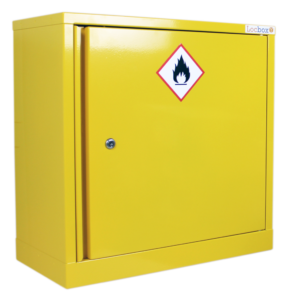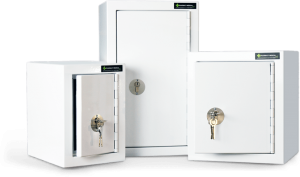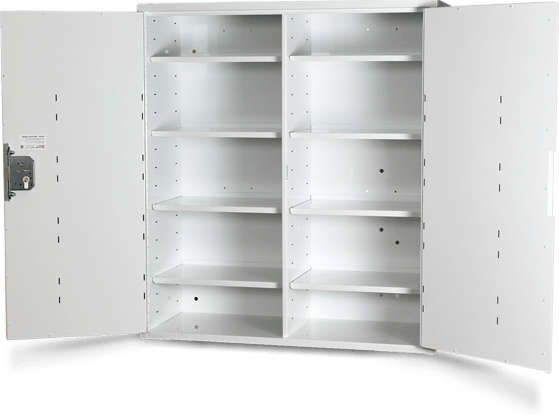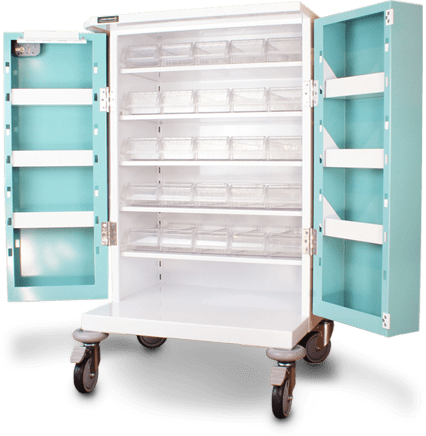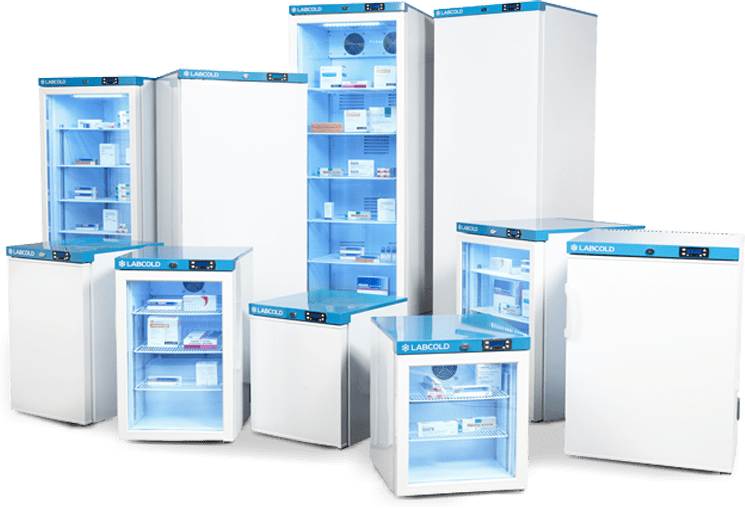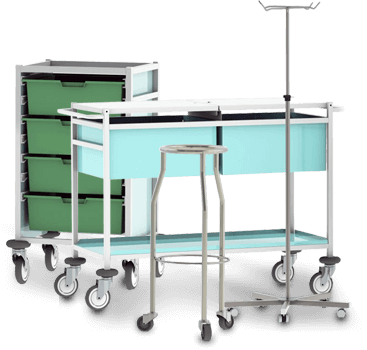S.I No.321/1982 Misuse of Drugs (Safe Custody) regulations 1982 for Controlled Drugs Cabinets
Our controlled drugs cabinets fully comply with S.I No.321/1982 Misuse of Drugs (Safe Custody) regulations, 1982, the regulation for the storage of Controlled drugs within the Irish Republic (Republic of Ireland).
S.I No.321/1982 Misuse of Drugs (Safe Custody) regulations 1982
See Our Range of Controlled Drugs Cabinets Here
These regulations are very similar to the Misuse of drugs (Safe Custody) regulation 1973 which apply to the storage of Controlled drugs here in the United Kingdom. The main difference with the S.I No.321/1982 -Misuse of Drugs (safe custody) regulations, 1982 is that it does permit the storage of controlled drugs in a container or cabinet which is not compliant with the S.I No.321/1982 -Misuse of Drugs (Safe Custody) regulations, 1982. This is only permitted if it is authorised by a member of the Garda Síochána who is not below the rank of a superintendent. A Garda superintendent may, when requested in writing inspect or request the inspection of a cabinet or safe into which Controlled drugs are intended to be stored also the premises within which the controlled drugs are to be kept. Should the cabinet be considered to provide a level of security that in the circumstances of that particular case is deemed to be sufficient within the requirements of the regulation, can issue a certificate in respect of that cabinet or safe to authorise it for the storage of controlled drugs. That certificate could be revoked by a member of the Garda Síochána [not below the rank of superintendent] at any time if there was a breach of a condition specified in the certificate or as a result in a change of circumstances or if the cabinet was considered no longer to provide an adequate level of security.
Requirements within the Irish Republic [Republic of Ireland] which relate to the construction of cabinets within which controlled drugs are stored.
S.I No.321/1982 -Misuse of Drugs (Safe Custody) regulations, 1982 are very similar to or the same as those set out in the United Kingdom’s Misuse of drugs (safe custody) regulation 1973.
These include: –

S.I No.321/1982 Controlled Drugs Cabinets
A cabinet must be manufactured as a fully welded construction from sheet Steel of a thickness not less than 1.6mm. Cabinets must be manufactured from pressed and welded steel sheet having a clearance of not more than 3mm between the door and the jam (the vertical part of the cabinet frame), in the case of a double door cabinet then between the two leaves of the doors.
Each door must be fitted with a lock with at least 5 levers and a key with at least 1000 key differs. In the case of a double door a dead bolt or similar device must be fitted to prevent the second leaf opening.
Where the length of a vertical closing door edge is more than 914 millimetres and where the horizontal edge is longer than 457 millimetres the door must be fitted with 2 locks of the types described above. Each lock must be not more than 1/3 of the vertical height of the closing edge from the top and likewise from the bottom of the door.
The cabinet must be securely fitted to the floor or wall which is solidly constructed (brick, block work or concrete) by means of at least two anchor bolts which pass through an internal steel anchor plate of at least 3mm thickness and has a surface area of no less than 19,355 square millimetres.
Our Blog is meant as a guide only. We strongly recommend you seek further advice and guidance from your accountable officer or regulatory authority.



